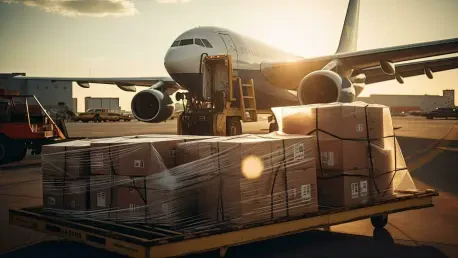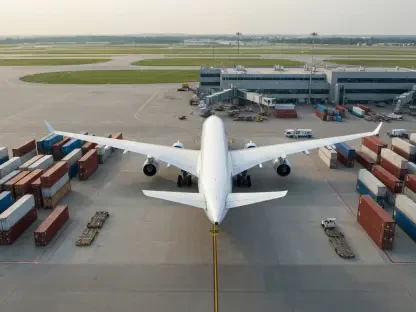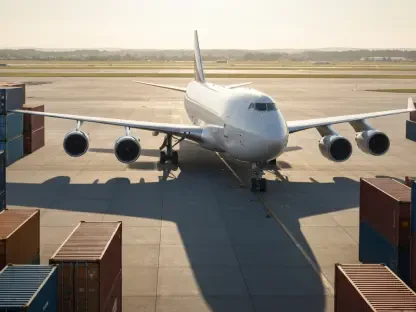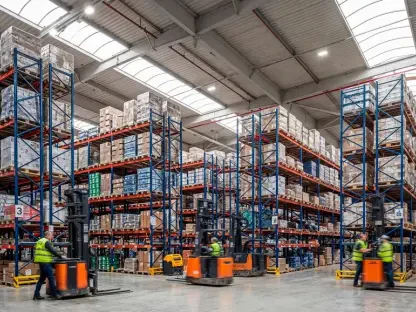The air cargo industry, a critical lifeline for global trade, is encountering a tumultuous period as fluctuating economic conditions and evolving trade policies impact spot rates. Recent data reveal a notable decline in air cargo spot rates, driven by a complex mix of market conditions, including prevailing trade uncertainties and tariff modifications. According to industry assessments, global air cargo spot rates experienced a 4% year-over-year decline, a downturn not seen since last year. This descent is attributed to a slew of factors, with trade tensions playing a pivotal role, prompting debates about the long-term implications for the industry. Analysts suggest this trend reflects deep-seated concerns within the air freight market regarding the potential stabilization of international trade dynamics. As manufacturers and retailers reevaluate supply chains, air freight is gaining preference over ocean shipping in some instances, as companies attempt to sidestep the financial burdens posed by tariffs. Despite these developments, the landscape remains unpredictable, underscoring a pressing need for adaptable strategies to counteract these challenges.
Navigating Trade Tensions and Tariffs
The interplay between trade tensions and tariffs significantly influences air cargo rates, with recent geopolitical maneuvers adding layers of complexity to the market. The Trump administration’s temporary 90-day reprieve on tariffs in May brought a brief respite but did little to alter the prevailing downward trend in spot rates. This development highlights the elasticity inherent in the air freight market, where strategies are continually realigned to mitigate financial impacts. As global trade patterns fluctuate, air freight carriers are experiencing heightened competition not only from ocean shipping but also from within as they vie for limited cargo. This competitive environment may lead to increased volatility in pricing, demanding innovative and flexible responses from industry stakeholders. Companies are compelled to grapple with these changing tides, evidenced by the substantial demand for air freight on specific trade lanes, contrasting with overall declining rates.
As trade uncertainties persist, there has been a marked shift in manufacturing locations, with companies opting to move production facilities out of China. This migration aims to circumvent higher tariffs imposed by the United States and open new avenues in trade flows. This strategic realignment underscores the dynamic nature of global commerce, with economic strategies adapting to the ever-changing geopolitical landscape. The resulting adjustments have contributed to an observed increase in air cargo rates from regions like Northeast Asia to North America, which rose by 7% over the past year. While companies explore alternative logistics solutions, a modicum of market stabilization has emerged, with the U.S. reduction in tariffs on low-value e-commerce imports from China and Hong Kong. Nonetheless, market fluctuations remain daunting, and stakeholders must remain vigilant in planning for upcoming shifts in international trade.
Shifting Trends in Air Freight Logistics
The evolving scene of air freight logistics is marked by quick adjustments in response to changing trade policies and tariff influences. The anticipated expiration of the tariff reprieve in the upcoming months hints at potential shifts, with a predicted short-term surge in cargo movements. Shippers might consider accelerating the transportation of goods to preempt future trade disruptions, fostering a temporary increase in air freight demand. As these dynamics unfold, industry players are confronted with the challenge of aligning transport strategies with the fickle nature of global trade agreements. The transient boost in demand looms as a precursor to another possible decline, should stable trade agreements come to fruition.
While the air freight market grapples with immediate challenges, parallels to the ocean shipping industry offer useful insights. The ocean container market, governed by longer lead times, presents trends that could eventually mirror those in air freight. As air freight deals with its distinct set of constraints—capacity, cost, and speed—the broader movements in ocean shipping may serve as a bellwether for future patterns in air logistics. This context emphasizes the significance of blended logistic strategies, where synergy between different transportation methods could buffer against possible disruptions. Despite ongoing demand on select routes, the unpredictability of trade agreements hampers sustained air cargo growth, leading industry stakeholders to reconsider long-term strategic frameworks. As companies navigate this landscape, proactive planning and innovative solutions are imperative to steer through these unpredictable waters.
Toward a More Predictable Future
The air cargo industry, essential to global trade, faces a challenging phase as economic fluctuations and changing trade policies affect spot rates. Current data highlights a significant drop in these rates, influenced by a mix of factors including trade uncertainties and tariff changes. Industry analysis reports a 4% year-on-year decline in global air cargo spot rates, marking a noteworthy downturn not seen since the previous year. This decline stems largely from trade tensions, fueling discussions about its lasting impact on the sector. Experts suggest this trend underscores deeper concerns within the air freight market over the possible stabilization of global trade dynamics. With manufacturers and retailers reassessing supply chains, air freight is sometimes favored over ocean shipping, as companies seek to dodge tariff-associated financial strains. Despite evolving circumstances, unpredictability still prevails, emphasizing the urgency for flexible strategies to navigate these challenges and sustain competitiveness in global commerce.









